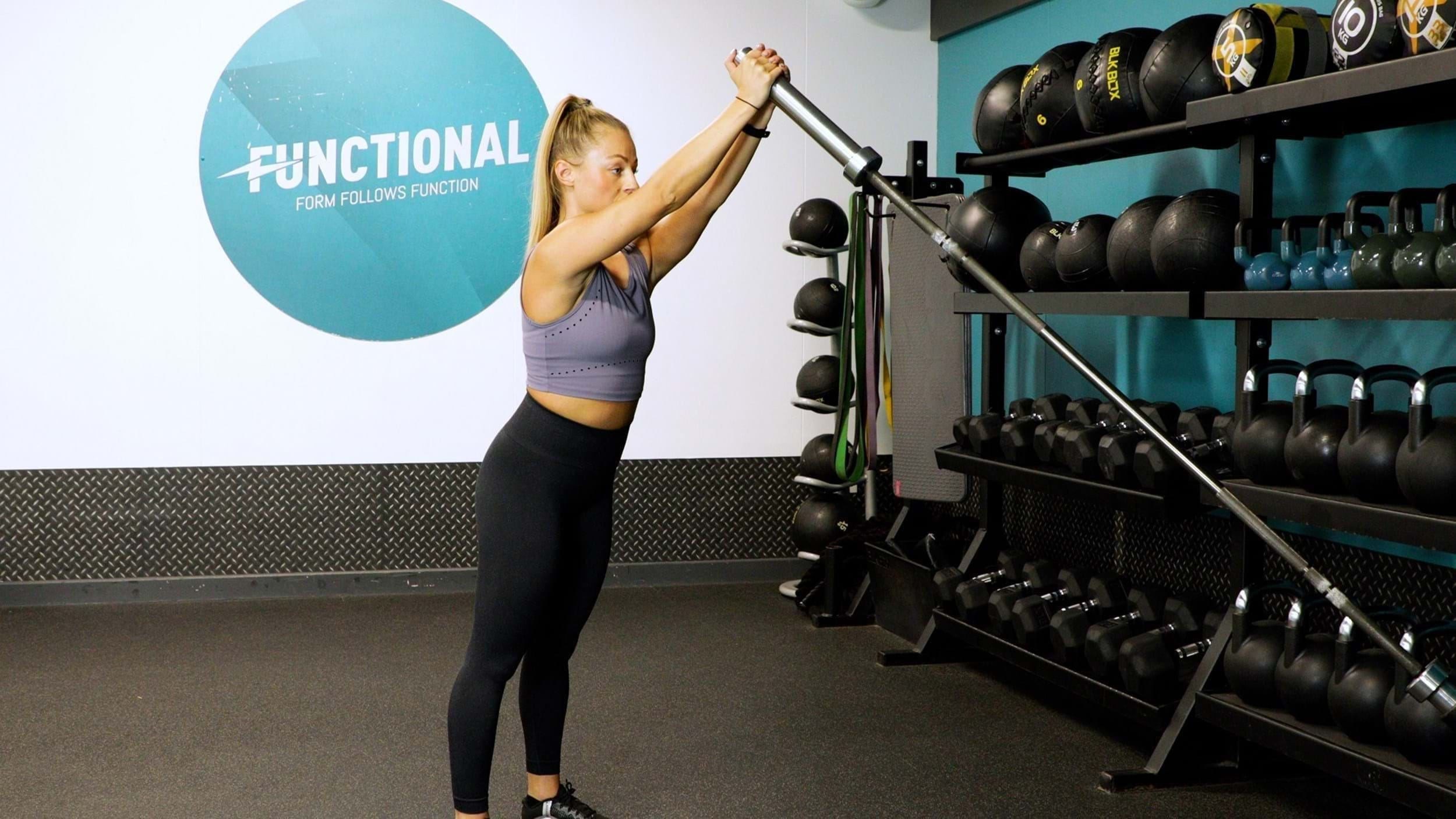Landmine Chest Press
What Is A Landmine Chest Press?

The landmine chest press uses the landmine attachment as the load for this standing chest press. The landmine attachment is fixed to the floor which creates a more stable, fixed bar path, which can be beneficial for form. This stability also makes this chest press variation feel easier than with free weights.
The landmine chest press allows for a powerful movement while targeting the pecs, deltoids, triceps, and core. The landmine chest press is likely a suitable option for those with more limited mobility and provides greater stability to ensure the appropriate muscles are targeted.
Check out some other chest press variations: barbell bench press, barbell incline bench press, dumbbell bench press, incline dumbbell press, close grip bench press,
Commonly Asked Questions On Landmine Chest Press
Landmine press provides added stability which can help to ensure the pecs are being used to power the movement. This makes it a good variation for those who want to build chest strength and reduce injury risk.
The landmine chest works the pec major and may have a greater impact on the upper part of the chest, known as the clavicular head. While both heads will play a part in lifting the weight, this is a good option for those who want to create a fuller upper chest.
The landmine chest press is likely to be more comfortable for the shoulder joint as the close landmine grip helps to prevent the elbows from flaring. This exercise helps to strengthen the shoulders and can improve shoulder mobility.
Landmine Chest Press Tips
If you’re working your way up to the barbell or dumbbell bench press, or you’re returning from injury, the landmine chest press is a good option. This chest press alternative teaches correct form while also reducing stress on the shoulders, minimising injury risk.
The landmine press is unable to be loaded as heavy as the barbell bench press. To add further challenge, perform this exercise kneeling instead of standing, or switch to single arm landmine press.
How To Do A Landmine Chest Press
Attach a barbell to a landmine attachment and load the free end of the bar with weight plates.
Pick the barbell up and hold it with both hands at chest height, before taking a hip width stance.
Keeping the bar at chest height, and tucking your elbows in throughout the movement, start the movement by pushing through your chest to extend your arms up. Make sure to keep a soft bend in the elbows when extended.
Lower the barbell in line with your mid chest making sure you keep your elbows tucked rather than allowing them to flare outwards. Lower the barbell until it is nearly touching your chest before repeating.
If you’re not sure if any of the above exercises are suitable for you, please consult your doctor before you start it. Need guidance on how to perform the exercise? Ask a personal trainer at your gym.